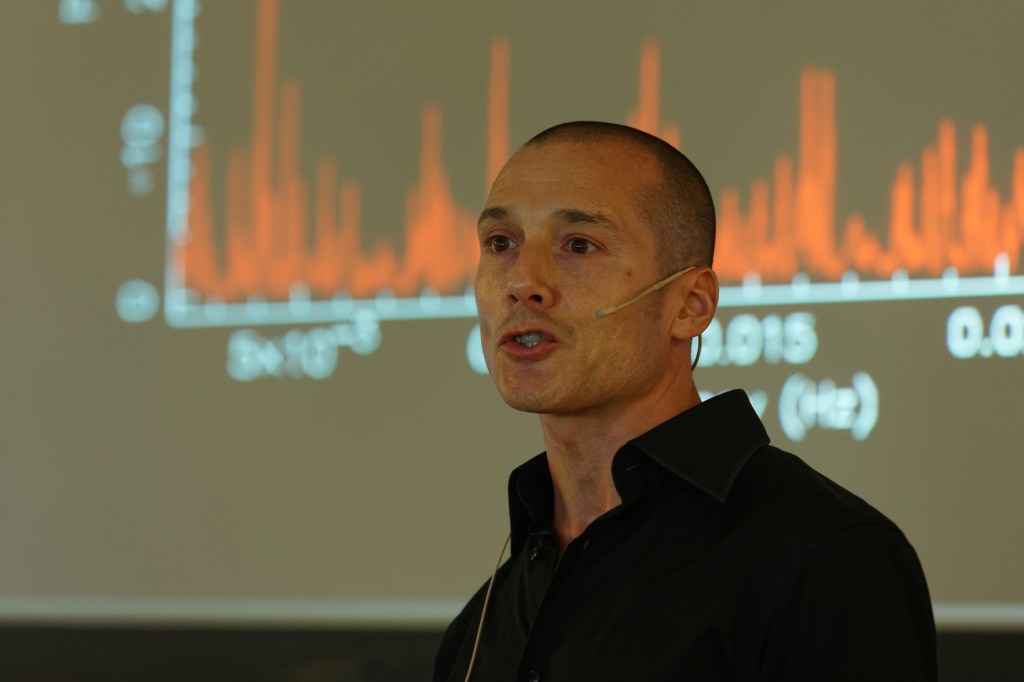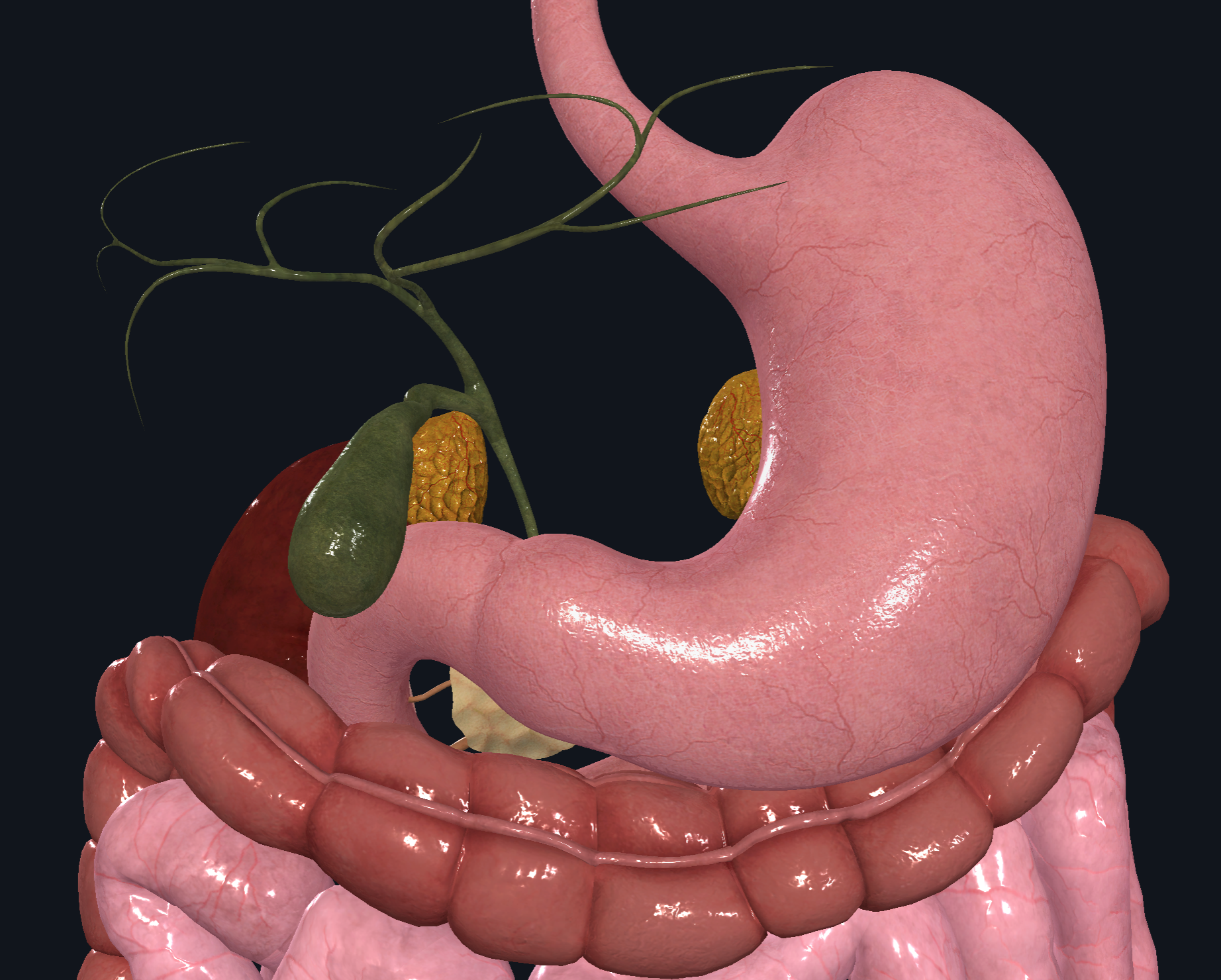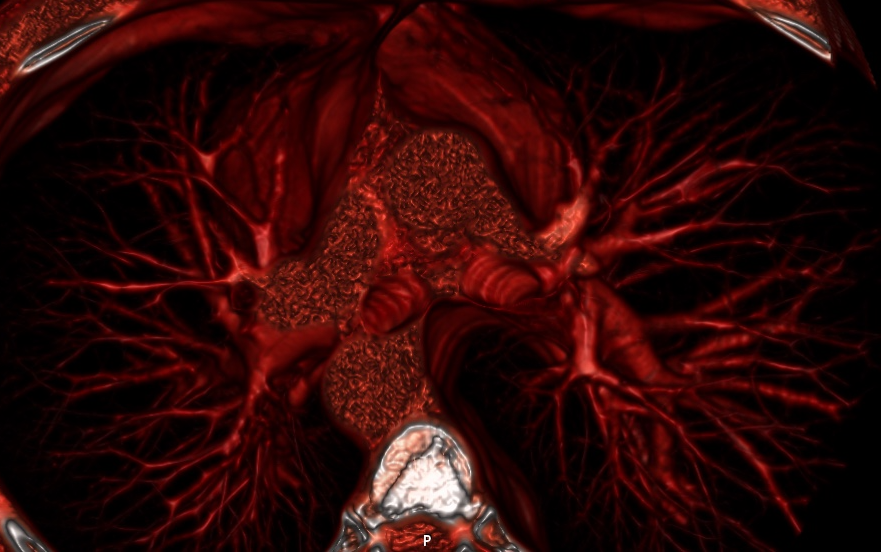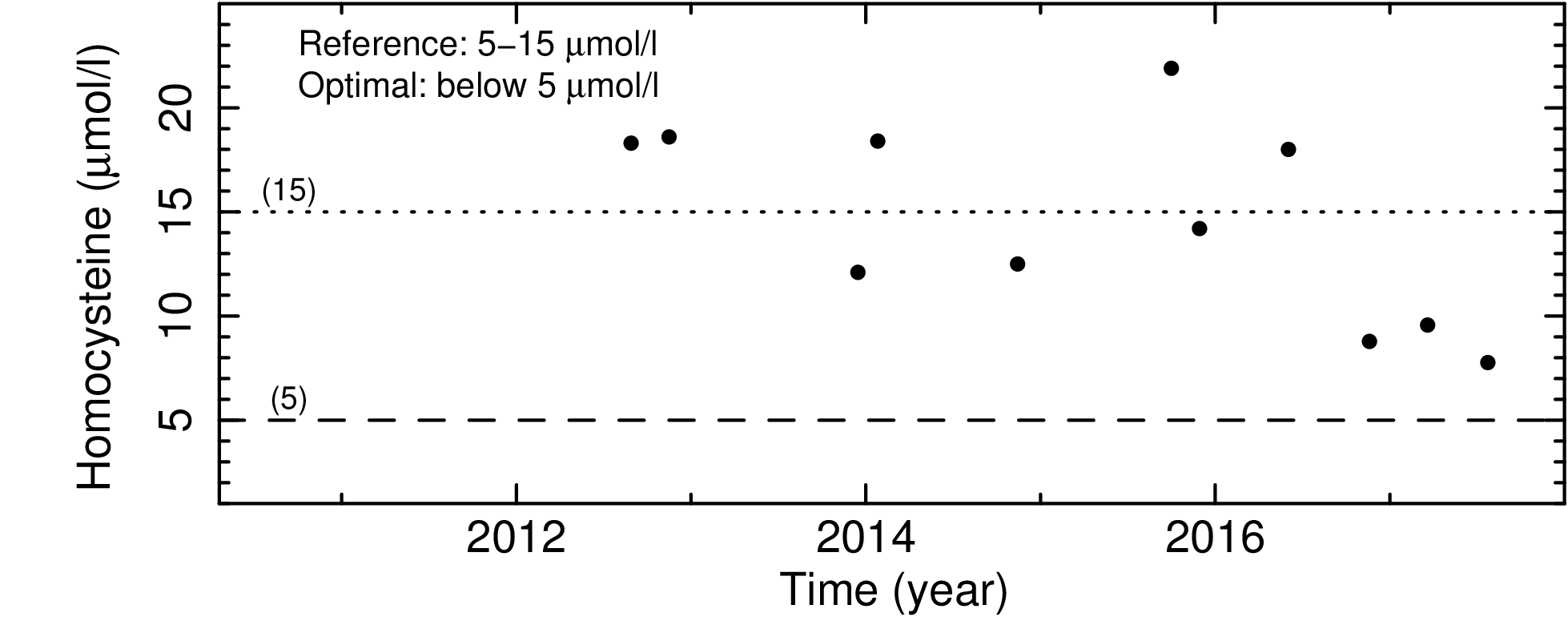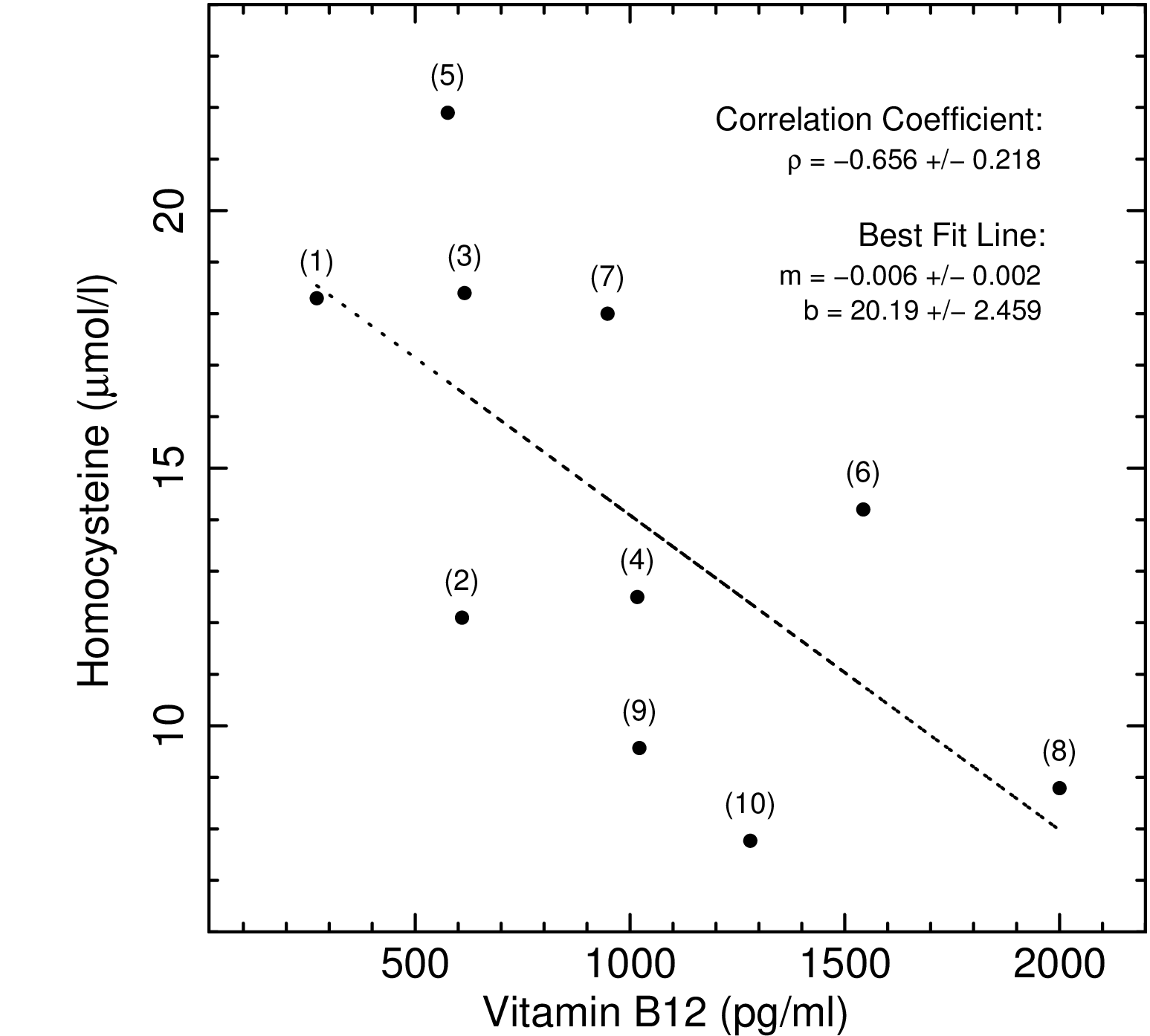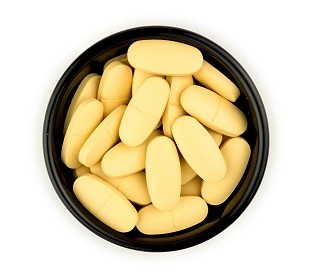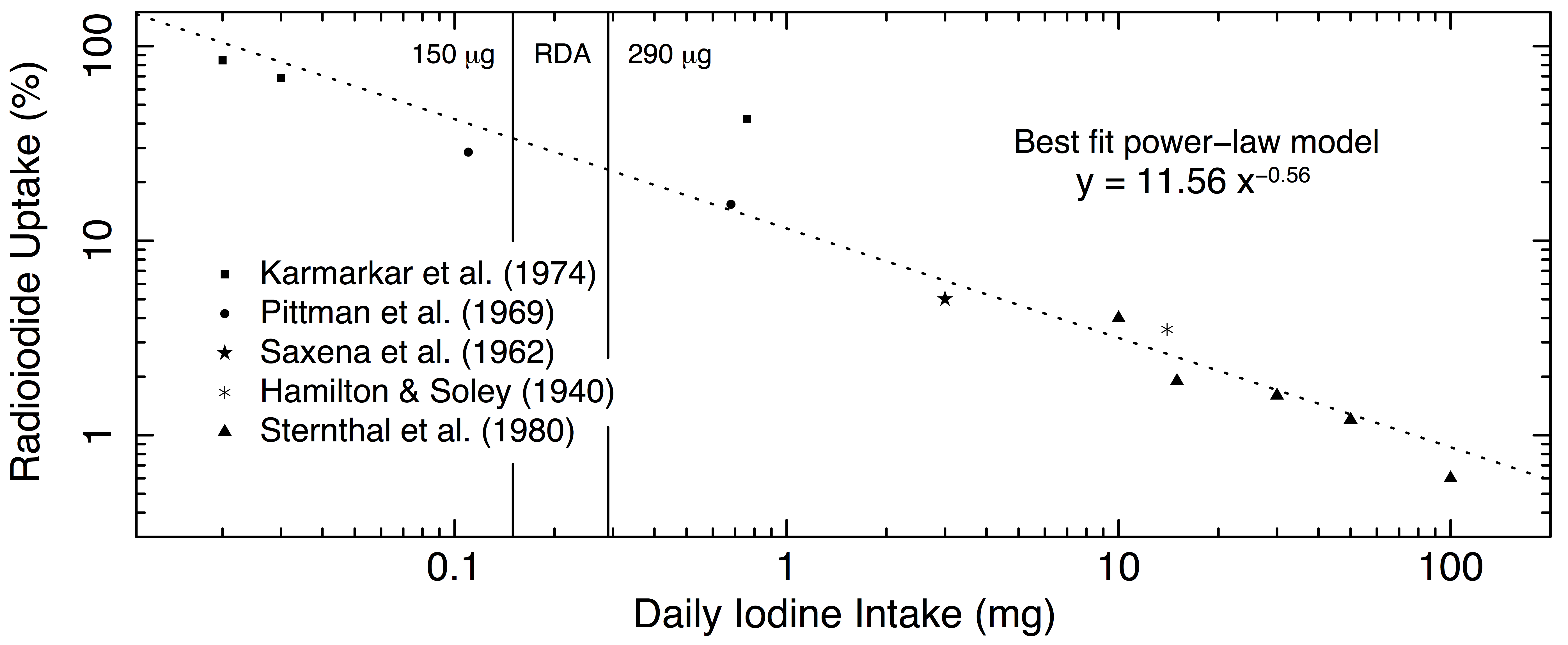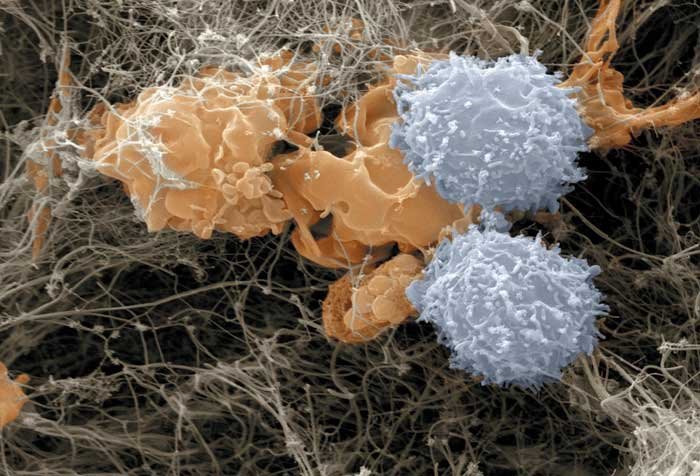Fasting stimulates autophagy, mitophagy, stem cell production, detoxification, mitochondrial biogenesis, neurogenesis, and neuroplasticity. Fasting also down-regulates muscle catabolism and up-regulates growth hormones to preserve muscle tissue. Because all of these are crucial for health and youthfulness, but tend to decrease rapidly with age, regular fasting is by far the most effective way to naturally slow down ageing and prolong health.
Autophagy means self-eating but refers to the breaking down and removal of damaged tissues, cells, and cellular component to reuse the molecules of which they are made to build new, healthy cells and tissues.
Mitophagy is the same but for mitochondria. Those damaged and dysfunctional are broken down into their constituents to be made available for rebuilding new ones, which is called mitochondrial biogenesis. Fasting is the most effective way to stimulate autophagy and mitophagy primarily through activation of a special enzyme, Adenosine Monophosphate-activated Protein Kinase, or AMPK for short. Fasting also increases production of nerve growth factor that stimulates the growth of new brain cells, no matter how old you are.
Stem cells have as their main purpose to repair tissues. Stem cell activity is highest in embryos and babies, and steadily decreases with age. Stem cell regeneration is strongly stimulated by fasting, but it’s uniquely related to the burning of fat for fuel, and not to the fasting itself. We know this because genetically switching off fat-burning in fasting mice stops stem cell production.
Detoxification takes place through the release of toxins from tissues. Biological survival mechanisms have evolved to sequester into fat cells chemicals and heavy metals from the bloodstream, and isolate them from damaging more sensitive and biologically active tissues and organs in the rest of the body. When fat cells split open to release the energy stored in the fatty acids they stockpile, these toxins are released into circulation for elimination.
Neurogenesis refers to the making of new neurons (brain cells), and neuroplasticity refers to the creation of new synaptic connections and nerve flux pathways in the neural network of the brain. This is without a doubt one of the most remarkable benefits of fasting.

(Image credits here)
All of these biological mechanisms have deep evolutionary roots. We know this because they are common to the most complex (and thus most recent), and to much simpler (and thus much older) organisms. It is most likely in these deep evolutionary roots that the remarkable healing power of fasting comes from.
Autophagy, mitophagy, stem cells, and ketones
Fasting stimulates the breakdown of dysfunctional proteins and cellular components, the preservation of active muscle tissue, and the rebuilding of new proteins and cells upon refeeding. (Read here an excellent article by Dr Jason Fung on the up-regulation of muscle preservation during fasting.) The acute stress of vigorous exercise, especially of strenuous resistance training, stimulates autophagy in much the same way as fasting does. Both stimulate mitochondrial biogenesis. Does this sound inconsequential to you? It really isn’t.
First, the accumulation of damaged cells and cellular debris can be equated to senescence. And senescence can be equated to death. Or rather, the accumulation of death in the body. Death, in this sense, is not really binary, it’s not like one moment we are alive, and the next we’re dead. It’s much more like we accumulate, over time, dead and dysfunctional cells, dead and dysfunctional mitochondria, dead and dysfunctional organelles. Little by little they accumulate, but there’s a threshold. There’s a point beyond which no more death can be accumulated inside the body. And when that threshold is reached, life can no longer be sustained. This is when we die. We call this ageing. The slowing down of things, the loss of energy, the loss of vitality, the loss of strength and flexibility, and the loss of mental acuity and intelligence. But it is, in reality, nothing other than the gradual loss of life through the gradual accumulation of death.
Second, mitochondria are the source of all the energy that is produced and made available to the body. The mitochondria in the cells produce ATP (adenosine triphosphate), the energy currency for all cellular operations and transactions. And no matter how you look at it, every last little bit of energy that is needed to do anything at all comes from these mitochondria in the cells throughout the body. A tiny drop or increase in energy production in the mitochondria would result in a massive effect on your strength, speed, endurance, resilience, but also concentration and sharpness of mind. Why?
Because there are around 30 trillion cells, and most have between 1000 and 2500 mitochondria each. That makes tens of thousands of trillions of mitochondria. The average cell uses 10 billion units of ATP per day, which means an average adult needs about 3 x 10^25 units of ATP per day. Now you can imagine what happens if the ATP production per mitochondria drops or increases by a tiny fraction, say of just a thousandth of a percent. Because there are so many mitochondria, the magnitude of the effect would be enormous.
Do you remember the “blues and greens” that Jeremy Renner and the other agents carried in little aluminum cases around their necks in the Hollywood film The Bourne Legacy? Remember how much they enhanced both physical and mental performance? This is what these little pills’ main purpose was: to increase mitochondrial energy production efficiency.
We don’t usually think about it in this way, but we should. Doing so, we would understand how important it is to support the body in cleansing and clearing out damaged tissues and cellular components so that they don’t accumulate. And we would also understand how important it is to support the body in rebuilding new, healthy cells and mitochondria to maintain optimal function for as long as possible.
Stem cells everywhere in the body appear to love fat-burning. Because fasting triggers fat-burning in basically every cell of the body, it also triggers an explosion in stem cells activity. It is this explosion of stem cell activity that powerfully stimulates tissue repair and regeneration throughout the body’s tissues.
Ketones are produced in the liver by transforming free fatty acids into beta hydroxy butyrate and acetoacetate through beta-oxidation. Ketones are the preferred fuel for the brain and heart, because burning ketones to generate energy (ATP) produces much fewer reactive oxygen species (free radicals), and thereby significantly reduces oxidative damage to the muscle cells in the heart and the neurons in the brain. Isn’t that so amazing?
The relationship between nutritional ketosis and fasting is simple: the brain is one of if not the most crucial organ because it regulates and coordinates almost everything that happens in the body; the metabolic activity of the brain can be fuelled by glucose or ketones; as blood glucose concentration drops and thus becomes less abundant, ketone production in the liver increases to ensure an adequate supply of fuel to the brain. Glucose levels naturally drop within a few hours, even after a carbohydrate-rich meal, due to the action of insulin. Fasting lowers and maintains low blood glucose levels over significantly longer periods of time. Therefore, in general, the longer the fast, the more ketones are produced, and the more are in circulation in the bloodstream.
Burning ketones for fuel stimulates the production, within cells, of antioxidants like superoxide dismutase (that transforms the superoxide radical into molecular oxygen and hydrogen peroxide), and catalase (that breaks down peroxide). Both the superoxide radical and the hydrogen peroxide molecule can cause many types of cellular damage if not neutralised or broken down as early as possible. So, the more ketones available, the more cellular superoxide dismutase produced, and the less cellular damage from free radical damage sustained. Isn’t this amazing?
Ketones also stimulate the production of adenine dinucleotide phosphate (NADPH) and NAD coenzyme that recharge antioxidants like glutathione, ubiquinol, and vitamin C to a functional state. Major functions of NADPH include recharging antioxidants; providing electrons for the synthesis of fatty acid steroids, proteins, and DNA; and acting as the substrate for NADPH oxidase (NOX) which plays a key role in immune function.
MCT oil and caprylic acid, both derived from coconut oil, are directly and easily converted to fuel and ketones by the liver to fuel brain and heart, and that will therefore bring your lucidity and clarity of mind and thinking. For this reason, they are excellent supplements to take in the morning and during the first part of the day, but should be avoided in the evening because they can lead to hyper-alertness and interfere with a restful sleep. MCT oil shouldn’t be used in case of liver disease.
Nutritional ketosis improves insulin sensitivity, stimulates fat loss, improves mental clarity, reduces risk of cancer, and increases longevity. It reduces cellular damage and inflammation through much lower free-radical and inflammatory cytokine production. And it also increases cellular and tissue repair by stepping up autophagy, mitophagy, and stem cell activation. All of these benefits are consequences, direct and indirect, of sustained low glucose and low insulin levels, and of the derivation of cellular energy from fats and ketones rather than from glucose. In short, nutritional ketosis is amazingly—actually almost supernaturally—good for you.
Toxins and Detoxification
We are all exposed to many toxic chemicals. No matter where we live, and no matter what we do: mold toxins; heavy metals like Hg, As, Pb, Cd from air, water, and food; arsenic (As) from pressure-treated wood, electronics, herbicides; lead (Pb) from gasoline, water pipes, paints; cadmium (Cd) from fertilizers; copper (Cu) as a by-product of many industrial processes that builds up in soil and water; pesticides and herbicides like glyphosate; PAH (polycyclic aromatic hydrocarbons) produced from the combustion of fossil fuels; BPA (bisphenol A) and phtalates used to make plastics; dioxins and dioxin-like (PCBs) from industrial chemical processes; heterocyclic amines from grilling at high heat; hexane, a neurotoxic chemical used to extract more oil from nuts and seeds (including coconut). The list goes on and on.
These are in the soil, in the food, in the water, and in the air. They are also in the soaps, shampoos, creams, makeup, and the countless number of chemical cleaning agents manufactured and sold the world over that we use in our homes. Obviously, the more of them you avoid direct exposure to the better. Consuming toxin-free food as much as possible, and using the simplest and most natural household and personal care products is an essential first step. But if embryos, as protected as one could ever be deep in a mother’s wombs and behind several layers of protective membranes and mechanisms, are known to accumulate toxins, then what about us?
Most of these chemical toxins are fat-soluble. The biochemical processes that have evolved to transport and isolate environmental toxins, whatever they may be, into fat cells is a remarkable survival mechanism that has without a doubt played an important part in allowing living organisms to evolve over the past 3.5 billion years into increasingly more complex plants and animals. However, the Industrial Revolution led to an explosion of human-made chemicals into the environment the pace of which has never ceased to increase.
Did you know that strawberries contain a fibre called fisetin that help remove and eliminate senescent cells from the body, which is essential for prolonging health? But did you know that they are also some of the most chemically contaminated foods together with spinach, nectarines, apples, grapes, peaches, cherries, pears, tomatoes, celery, potatoes, bell peppers? Among the least contaminated are avocados, sweet corn, pineapple, cabbage, onions, sweat peas, papaya, asparagus, mangos, eggplant, honeydew, kiwi, cantaloupe, cauliflower, and broccoli.
In the past four decades only, more than 85 thousand different chemicals have been released into the environment. And the amount has only increased with time. One of, if not the most dangerous is Monsanto’s infamously well-known glyphosate because it is the most heavily used broad-spectrum herbicide of all time: from 1974 to 2016, soils, waters, plants, and animals have absorbed 1.8 million tons in the US alone, and 9.4 million tons worldwide.
Since 1974 in the U.S., over 1.6 billion kilograms of glyphosate active ingredient have been applied, or 19 % of estimated global use of glyphosate (8.6 billion kilograms). Globally, glyphosate use has risen almost 15-fold since so-called “Roundup Ready,” genetically engineered glyphosate-tolerant crops were introduced in 1996. Two-thirds of the total volume of glyphosate applied in the U.S. from 1974 to 2014 has been sprayed in just the last 10 years. The corresponding share globally is 72 %. In 2014, farmers sprayed enough glyphosate to apply ~1.0 kg/ha (0.8 pound/ acre) on every hectare of U.S.-cultivated cropland and nearly 0.53 kg/ha (0.47 pounds/acre) on all cropland worldwide. (Environmental Sciences Europe, 2016, 28:3)
Our fat cells are the body’s chemical storage facility. The more of them there are, the more chemicals can be stored. The less body fat there is, the less chemicals are stored. And if your storage unit is full, then no matter how hard you try, you won’t be able to add another piece of furniture. This is also true for the body’s chemical storage capacity. This is both good and bad, but for different reasons.
More storage allows the organism to survive and function even in the face of significant chemical contamination. But the more chemicals are stored in the body’s fatty tissues, the more the organism as a whole becomes contaminated, and the less able it becomes to function optimally. A large dose of chemical exposure, say from a chemical leak, would require a large fat storage capacity in order to prevent overwhelming the rest of the body’s organs and systems. In such circumstances, someone with more body fat would be better off than someone with less.
But for most of us, this kind of acute exposure from a chemical accident in our near vicinity is not much of a concern. Moreover, you shouldn’t imagine that because chemical toxins are stockpiled in fat cells to minimise exposure in other tissues that they have no effect. Does burying radioactive waste makes it innocuous? It makes it a lot less dangerous and damaging, that’s for sure. But only in the short term, and to some extent, because the radioactive wastes leak out into the soil and the ground water.
The same is true for the chemicals stored in our fat cells. The storing of them protects us from the major toxic effects of direct and large scale exposures, but there is some leaking of these toxins out into the system, especially over time, and as our storage tanks get full. In general, therefore, this is what we should be concerned about: the low-grade chronic exposure and its long-term effects. And the less fat storage, the less chronic exposure there will be.
Fasting regularly and smartly, is the best way to both clear out the storage tanks, and shrink the overall storage capacity for chemical toxins, thus minimising the amount of leaking taking place on a day-to-day basis. So, here’s what we need to know about this:
The more access to fat stores for fuel, the more toxins are mobilised and released from the tissues. This is what we stimulate in the most efficient manner when we fast, because the body needs to sustain all of its cellular processes by burning fat for fuel. But fat loss releases toxins in bloodstream. And this is good because toxins are mobilised. Detoxification, however, must be supported in order for the toxins to be excreted. Otherwise they are released into circulation and can be very damaging. It is for this reason that water fasting is in general not a great idea: it releases too many toxins too quickly, and offers no mechanisms for bindings and eliminating them.
Once toxins are liberated, they must be bound to something in order to be eliminated. To be liberated, toxins are first made water soluble by the addition of a hydroxy (OH) radical. This is essential for elimination, but it makes the toxin more reactive. In a second stage, the now water-soluble but reactive toxin, is conjugated by the addition of a methyl, sulfur, or acetyl group, or else of an amino acid like glycine or glutathionine, in order to be made less reactive. After this, it is transported out of the cell to be eliminated through urine, sweat, or stools.
The detoxification process is supported by facilitating urination (drinking more); facilitating passive sweating (sauna, near-IR is best); eating cruciferous vegetables (broccoli, cauliflower, cabbage, Brussel sprouts, and kale); and supplementing with toxin binders (activated charcoal, chlorella, chitosan, psyllium husks, and citrus pectin). Actually, fat regain following fat loss, something which is very common, is almost certainly a protective mechanism to sequester the toxins that were released but not eliminated. And sweating has to be passive, because exercise suppresses detoxification: the system can be either in fight-or-flight or in rest-and-repair mode; exercise is associated with the former.
Effective detoxification depends on healthy intestinal function. A compromised gut lining allows toxins from the foods or process of digestion to enter the bloodstream. This leads to chronic inflammation and a chronically triggered immune system that eventually results in autoimmune conditions. Fasting reduces gut permeability by enhancing integrity of gut lining: it induces a metabolic switch to fat-burning in the intestinal stem cells that significantly enhances their function, and promotes the healing of the junction between gut lining cells, as well as gut flora diversity.
Resistant starches are good because they feed the gut bacteria, and do not break down into glucose. They are found in under-ripe bananas, papayas, and mangos. Most notable is that if rice is cooked with coconut oil, allowed to cool for 12 hours, and reheated, it will increase in resistant starch by a factor of 10! This reduces calories that would be absorbed from the starch going to glucose by 60%! This simple preparation of the rice turns it from a damaging high-sugar food to avoid, into a beneficial prebiotic. Quite amazing, isn’t it?
How to fast: first steps
Now, before going any further, you should not fast if you are underweight or malnourished; pregnant or breastfeeding; or if you have excessively high uric acid levels. Fasting while underweight or malnourished will exacerbate the negative consequences of the malnourishment. Fasting while pregnant or breastfeeding will release toxins that could potentially be highly detrimental to the baby. And because fasting naturally increase uric acid levels due to the process of cellular cleaning, it could, if starting from an already excessively high concentration, be damaging to the organism. Otherwise, fasting will in general be very beneficial.
First, because fasting strongly influences the regulation of the circadian rhythm, and because one of the most important functions of sleep is to clean out the brain from the byproducts and wastes of its metabolic activity during the waking hours, we should never eat during the night, and always allow at the very least three but preferably four to five hours from our last bite to the time we go to bed. This is necessary to set the conditions for a deep, restorative sleep that keeps our brain in good shape. This is true independently of everything else. So, you can start doing this right away without even having to do any prolonged fasting.
Second, in order to avoid a negative impact on your mental and physical performance during the fast, the body should be adapted to using fat for fuel before you start fasting. You will feel shitty otherwise. I have written two articles that relate to this: Keto-adaptation for optimal physical performance and The crux of intermittent fasting. You should read both. It’s important to understand the biochemical and physiological foundations of why we do things in a particular way. Otherwise, we will lack the intellectual understanding on which depends our ability to make informed choices, but also the resolve to see them through.
Third, in order to have a smooth transition to longer fasting periods, you need to increase your fasting window gradually: to gradually increase the time between your last bite in the evening, and your first bite the next day. Let’s say your sleeping schedule is near optimal, sleeping from 22:00-23:00 to 7:00-8:00. Let’s also assume that you make sure you leave 4 hours before going to bed so that you have your last bite of food around 18:00. Everyone should fast for at least 12 hours. That’s the minimum to aim for, and it requires very little effort.
It would be much better to fast for at least 14 hours, in which case you would wait until 9:00 before having any food. A 16-hour fast would bring you to 11:00 for a late breakfast or early lunch. An 18-hour fast would have you eating lunch at 13:00. And a 20-hour fast means you would be having your first meal around 15:00. Take as long as you need to gradually go from the minimum of 12 hours to at least 16, 18, or even 20 hours.
When you can do this, you will know for sure that your metabolism is well fat-adapted, that your liver is producing ketones efficiently to nourish your brain during fasting periods, that the coarsest detoxification has to a great extent taken place during those weeks or months you have been adapting to longer fasting periods, and that you are now ready to extend your fasts to 24 or 36 hours once in a while, or as much as a couple of times a week. It is far more beneficial on the long term to fast for shorter periods of time every day, then it is to fast for a longer time less frequently. Because each time we fast and then refeed, we activate and benefit from the health-promoting and youth-enhancing mechanisms of the body.
Eating protein activates the mTOR (mammalian or mechanistic target of rapamycin) pathway, which is a powerful catabolic (tissue breakdown) that raises blood sugar levels. Hence, in general, we should keep protein intake to the optimal minimum for our needs. That’s something like this:
- Young: 1g/kg of lean body mass per day
- Older: 1.2g/kg of lean mass per day
- Athletes: 1.5g/kg of lean mass per day
It’s important to remember that beyond the minimum optimal amount, protein intake should be adapted to level of activity: more activity means more protein, and less activity means less protein. Once you are well fat-adapted—after about 8 weeks on a very low carbohydrate diet—you should make a point of having a high fruit and/or starch day once a week. This will ensure that you maintain metabolic flexibility and a perky insulin response. Long term nutritional ketosis can lead to a sluggish insulin response, higher-than-optimal glucose levels and thus glycation, and otherwise unwanted biochemical and hormonal adaptations, which will prevent fat-loss and promote muscle breakdown. Variety stimulates metabolic flexibility.
But make sure it’s clear to you what this means: it means staying in nutritional ketosis for at least 5 days per week. And having a high-carb day means having between 100 and 150 g of sugar/starch from fruit, sweet potatoes, or rice. You should also make that high-carb day a low-fat day. In addition, digestion quality must remain your top priority. This means having your fruit or starches on their own as much as possible, and avoiding combining them with a lot of protein, which will compromise the digestion of both.
How to fast: specifics of keto-fasting
Very importantly, clearance of damaged cells and cellular debris or damaged organelles takes place during fasting, but rebuilding of organelles, cells, and tissues, most notably liver rejuvenation, occurs during refeeding.
Ketofasting following Dr Joseph Mercola’s method is partial fasting lasting ideally around 24 to 36 hours and up to 48 hours. It starts after the last meal of the day, extending over the course of the day following that, either ending with a meal 24 hours later; extending through a second night and ending at the start of the next day for the 36 hour fast; or extending 48 hours to latter part of the day. We saw why water-fasting is not something most of us should be doing in this day and age, and why it’s important to support the detoxification process while fasting. This requires some inputs: it requires protein (amino acids), mitochondrial support, and toxin binders.
The notion of breaking a fast is often taken as binary: we are either fasting or we are not. To some extent this is true. But in many ways it is not. It depends a lot on what it is that we ingest. The essential point is that the benefits of fasting come from maintaining very low blood sugar levels, remaining in nutritional ketosis, and therefore keeping the body in a cleanse-detoxify-repair mode.
Hence, there is a big difference between ingesting a teaspoon of coconut oil or a teaspoon of honey: both provide some calories, but the former supplies only fatty acids that actually promote nutritional ketosis, while the later supplies only simple carbohydrates that will immediately raise blood sugar levels and suppress ketosis, albeit temporarily, and more or less, depending on several other factors defining the body’s metabolic state and efficiency. So, in this regard, it’s better to think of fasting as grey rather than strictly black and white. Naturally, it’s really not an issue to have cucumber and celery with salt, for example.
Protein intake, needed to support the detoxifications processes, should be about half of your daily requirement, for example, 45 g instead of 90 g for 60 kg of lean body mass exercising 3-4 per week. During fasting, protein should not be branched-chain amino acids (BCAAs) nor animal protein rich in BCAAs, because they activate the mTOR pathway that inhibits autophagy. The rest of the calories should be from fat to reach 300-600 kcal from coconut oil, MCT oil, or caprylic acid. Even small amounts of 85% chocolate for which each 10 g square provides 5.3 g of fat, 0.8 g of protein, and 1.5 g of sugar, amounting to 62 kCal of which 48 are from fat, 3.2 from protein, and 6 kCal are from sugar. These are all considered supplemental levels.
In fact, because the purpose of eating protein is to supply amino acids in support of basic functions and detoxification, it is most effective to replace protein intake by an amino acid supplement. And because converstion of protein to amino acids is at most 1/3 efficient, meaning that the highest quality animal protein (e.g., beef) will yield at most 1/3 of its amino acid contents once digested, we can replace 45 g of protein by 15 g of amino acids. Splitting this intake into 4 doses of 4 g each makes for a good rhythm of taking these every couple of hours over 8 hours or so. And they can be taken together with the chlorella and spirulina supplements as well as the phospholipids.
Even though exercising suppresses hunger due to the increase of stress hormones, unfortunately, it also suppresses detoxification. For this reason, you shouldn’t do strenuous exercise on fasting days. Focus on rest and repair.
Supplements to support autophagy and toxin elimination include:
- Ubiquinol 100-150 mg twice to support mitochondrial energy production, regulate gene expression of processes related to inflammation, growth, and cellular detoxification.
- Phosphatidylcholine and broad spectrum phospholipid to support rebuilding and thereby eliminating chemicals from cell membranes, especially in the brain.
- Probiotics (not dairy-based) to help rebuild/balance gut flora if digestion is suboptimal. Keep in mind that the natural flora of the gut is adapted and adapts according to food and drink intake, as well as to the daily rhythms.
- Bitters to support the liver in cleansing and elimination (e.g., Dr Shade’s Liver Sauce by Quicksilver Scientific; Swedish Bitters by Flora or by Maria Treben; herbs like Gentian, Dandelion, Goldenrod, Myrrh.)
- Binders to support elimination of toxins, all to be taken on an empty stomach to not interfere for nutrient absorption in the gut:
- Psyllium husks (1 tbs 1-2 times/day) stirred into a large glass of water—binds to stuff in gut to eliminate in stools;
- Charcoal capsules (3 caps 1-2 times/day)—binds and removes pathogenic bacteria, Pb, Hg, and excess Fe;
- Chitosan (2-3 g)—binds and removes heavy metals and radionucleotides;
- Modified citrus pectin (5 g 1-3 times/day)—binds and removes dead/weak cells;
- Chlorella—binds and removes Hg, but also provides a balanced plant protein.
Refeeding is as important as fasting, because this is when the rebuilding takes place. It is very important to remember that. Unless you are overweight and carrying around a lot of energy reserves in the form of extra body fat, intermittent fasting is not a matter of replacing three meals with only one. You need to provide the body with all the energy, macro and micro nutrients it needs to thrive. This remains true under all circumstances. Therefore, you need to make sure to not fall into the trap of eating 1/3 of what you normally would, and grow thinner and thinner with time. That is not the point, and is obviously not sustainable in the long term. You need to provide the bodymind all the nutrition and calories it needs. The key is that this is true on average: If you don’t eat for extended periods of time, you naturally need to eat more when you do.
Concluding remarks
As time goes on and as our technological means of detailed investigations at the cellular level improve, we discover more and more amazing health-enhancing mechanisms through which fasting acts on the organism to make it stronger, more resilient, more functional, and more youthful.
But beyond all the super cool details about the mechanisms by which fasting works its magic on our body and brain, the essential message here is that fasting is really good for us. It’s in fact so good that it’s amazing. And considering that it can stimulate the growth of new mitochondria and even new brain cells, we could even say that it’s miraculously good for us.
Having understood that it is the combination of the fasting period and the refeeding that follows which makes the magic happen, the natural question is how can we maximise this. And the answer is quite simple: we fast and refeed frequently. We fast long enough to activate the health-enhancing cleansing, detoxification, and preservation mechanisms and pathways, and refeed with the most nutrient dense and nutritious foods to maximise the efficiency and effectiveness of the rebuilding and renewal mechanisms and processes.
Once well keto-adapted, and after a period of gradual adaptation to longer fasts, it becomes very easy, and even natural, to fast daily from 18:00 to 12:00 or even 14:00. It even becomes easy and natural to eat two small meals or a single large meal just once a day. In this way, we can get the benefits of fasting and refeeding every single day. Of course, longer fasts of 2, 3, or 4 days will go deeper in stimulating the cleansing, preservation, and repair potential of the fast. But the longer the fast, the more difficult it grows to maintain, and the less frequently it can be done because the rebuilding in between fasts must also be longer. After all, our daily requirements for calories and nutrients is what it is, and although we can easily postpone providing the organism what it needs to function optimally for some time, everything it needs must eventually nevertheless be provided.
This is therefore what I do. A daily fast of about 16 to 20, and usually 18 hours. Once or twice a week a full day’s fast with a single large meal, but typically one small meal around 14 and one larger one around 17 or 18. A comprehensive daily supplement programme; bitters over extended periods a couple of times a year; binders like psyllium husks semi regularly according to need based on quality of bowel movements, and smell of underarm sweat; maximum hydration and alkalisation of body fluids during the fast; and most fundamentally, maximum nutrition at refeeding. Maximum nutrition and nutrient density from plant foods, and maximum nutrition and nutrient density from animal foods. And the final note I’d like to leave you with is this:
The process of ageing is the process of dying. And this process of ageing and dying is a very slow and gradual process of accumulating dead and dysfunctional cells, mitochondria, organelles, and tissues. As these accumulate, we age and die. The faster they accumulate, the faster we age and die. The more we have accumulated, the closer we are to the end, to the threshold beyond which the organism cannot sustain its activity. Fasting—and this is the single most essential benefit of fasting—is by far the most effective way to slow down, minimise, prevent this continuous accumulation of death, and instead promote and stimulate cleansing, renewal, and rejuvenation within this organism that we call our bodymind.
I hope all of what we saw here together will help you enhance your health, and improve the quality of your life.
This article is inspired by and primarily based on KetoFast by Dr. Joseph Mercola.
Thank you to all our patrons, and in particular to Eric Peters, Sappho Griffin, Toni Bates, and Bostjan Erzen, for their support. Become a proud sponsor of healthfully.net and join our patrons
